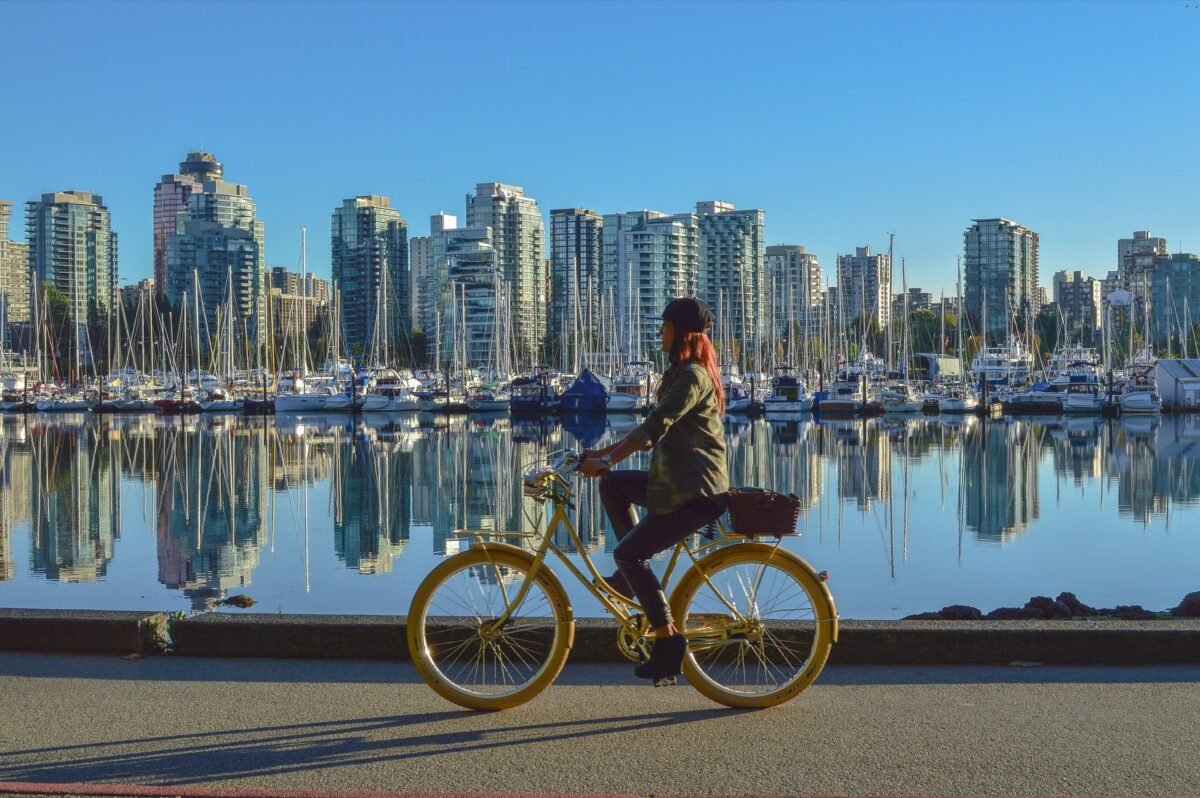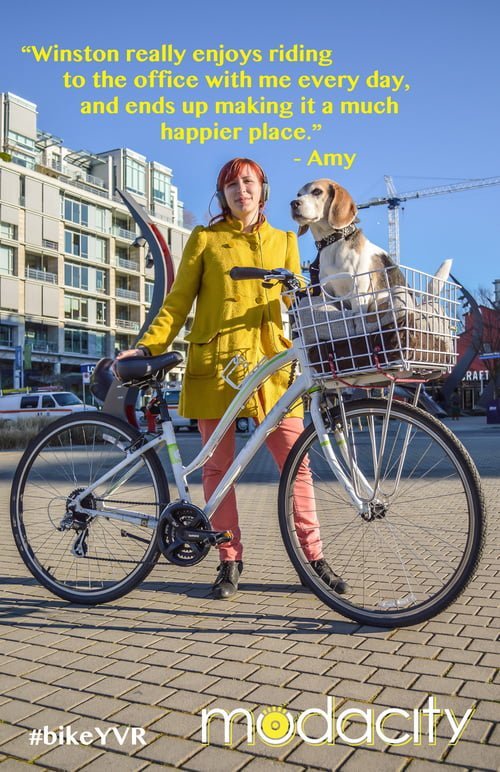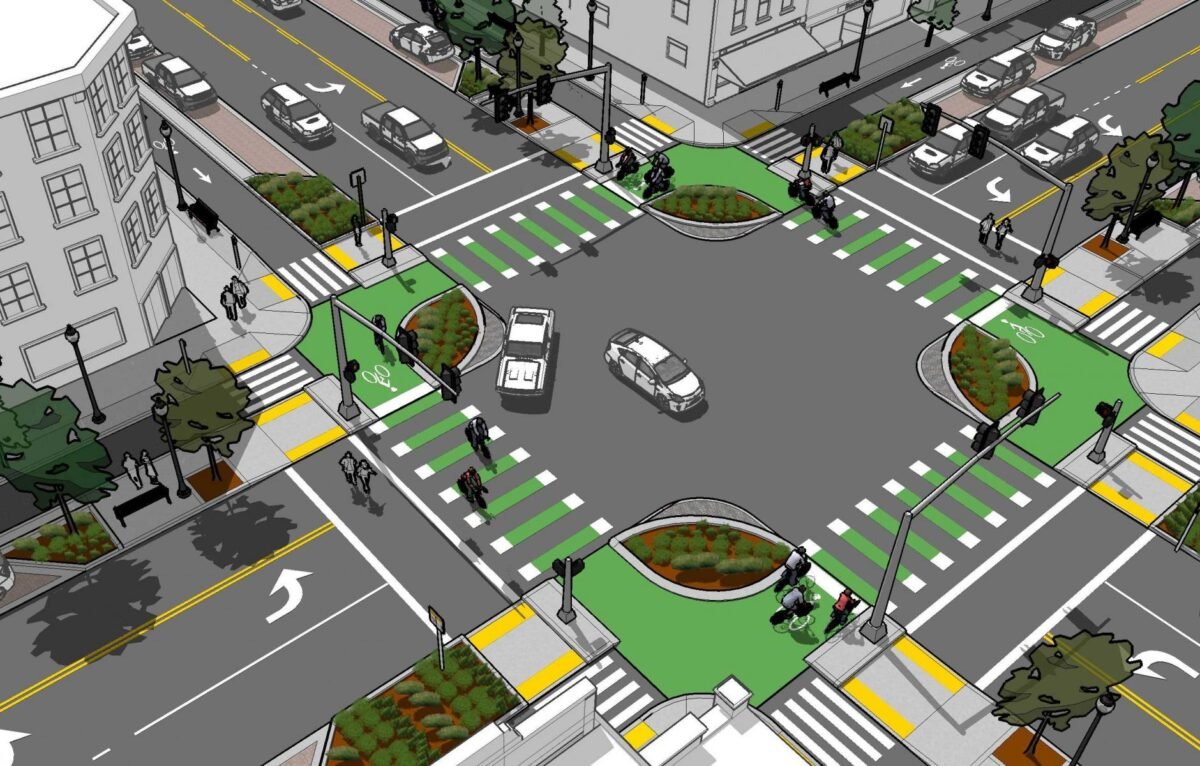slow down! and four other rules to make people love cyclists

Just as there are two Americas, there are two types of cyclists.
First, there are the Cyclists with a capital “C,” clad in Lycra and obsessed with speed. These cyclists may spend upwards of $1,000 on a bike. They’re often male, and cultivate a look that signals cycling as a privileged activity not appropriate for mortals. Entitlement drips off of them, most evident in the way they consider themselves exempt from traffic laws, zipping through red lights at speeds well over the limit. They like to loudly decry the poor reputation of cyclists, yet never connect cause to effect.
Then there are the casual cyclists, also known as “The Rest of Us.” This group is more diverse and civil. They seldom wear Spandex, Lycra, or any other blend of said artificial fibers. In fact, you’ll often see them smartly dressed in pedestrian or business attire. Their cycling style tends to be fairly cautious, which makes sense because they’re often inexperienced. To them, cycling is less a lifestyle choice than simply a mobility option.
It is this second group of cyclists, says Modacity, a progressive communications firm operating out of Vancouver, that we must pay attention to and reach in order to create a cycling culture that matters. Modacity wants to normalize cycling and make it a mainstream activity and practical mobility option for all.
In other words, dad bods of the world unite, because cycling is for you, too.
Chris and Melissa Bruntlett, the creators of Modacity, have advocated for pro-bike policies since 2010. In that year, the Bruntletts sold their family car and made the conscious decision to rely on public transit and cycling for their mobility needs. Chris and Melissa also have two small children accompanying them on their endeavor. The Bruntletts are far from a family of militant, extreme-sports cyclists – and that’s kind of the point.

Just recently, BikeArlington – which educates Arlington, Virginia residents and visitors about the area’s many bike amenities – discovered Modacity through its award-winning series of videos for Copenhagen’s Cycle Chic brand. BikeArlington reached out to the Bruntletts and started a dialogue, and they recently decided to be partners on a BikeArlington project you’ll hear more about in the coming months.
Over the past several years, the Bruntletts have watched (and helped to realize) Vancouver’s transformation to a world-class city for cycling. Their recommendations are universal, as applicable here as in their native Canada.
On the policy and infrastructure side, the Bruntletts advocate for more and better bike infrastructure, especially protected bike lanes, lower automobile speed limits, more bikeshare systems, and elimination of helmet laws.
Cyclists have to do their part as well – not just advocating for better policies, but thinking about the role they play in the public perception of cyclists. By adhering to laws, slowing down, and giving thought to these other ideas, we’ll create a more inclusive, more successful, landscape for all cyclists:
- Enjoy the Journey. First and foremost, this means slowing down and being present in your environment. Bicycling is often the most-efficient means of travel, and slowing down to be a bit more safe and careful probably isn’t going to change that – and is certainly more comforting and civil to those around you.
- Try a Cruiser Bike. Upright riding lends itself to a more relaxed, slower ride, and more importantly, allows you to interact with your environment and neighbors. A cruiser (or Dutch-style) bike may not be fancy or win the Tour de France, but it may make your commute more pleasant, so why not try one out. Plus, says Melissa Bruntlett, “everyone needs n+1 number of bikes, where n is the number of bikes you already own.” (There are also a lot of options such as regular shorts or pants that hide the Lycra underneath.)
- Dress for the Destination. Specialized bicycle clothing is a signaling device. It communicates that cycling is for experts, not for everyone. Think about whether Lycra is for practical reasons or to gratify your own ego. When at all possible, dress for the destination. It won’t always be possible in hot climates or bad weather, but it may be more practical than you realize.
- Helmets Optional. This is a controversial subject, and one the Bruntletts try to stay away from, but they believe helmets are part of the specialized gear signaling that cycling is for the experts. Plus, helmets keep people off bikes, and the most important way to keep cyclists safe is get more people bicycling. There’s safety in numbers. Also, as Chris Bruntlett says, “Helmet laws make bikeshare systems unworkable.”
- Be a Creative, Vocal, Leader. Local government leadership already embedded that supports bicycling is terrific, but this is something we have little control over. Rather, be a leader among your community, and be outspoken. During a recent visit to Arlington, Chris Bruntlett was blunt in his assessment of Columbia Pike. “It’s an absolute disaster for cyclists,” he said. Be persistent in your efforts, and don’t be afraid to be wrong. Every single bike-infrastructure project in Vancouver, Chris points out, encountered opposition. If it were easy, it wouldn’t be worthwhile.
What do you want your cycling community to look like? How do you think cyclists should play a part in this transformation?



